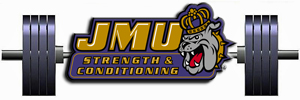Levers
For your arm, leg or any body part to
move the appropriate muscles and bones must work together as a series of
levers. A lever comprises of three components -
- Fulcrum, pivot point, or
access of rotation - the point about which the lever rotates
- Load - the force applied by
the lever system
- Effort - the force applied by
the user of the lever system
The way in which a lever will operate is
dependent on the type of lever.
This information is from the Sports Coach
web site © Sports
Coach
 |
 Official
Site of the James Madison University Strength & Conditioning Program
Official
Site of the James Madison University Strength & Conditioning Program